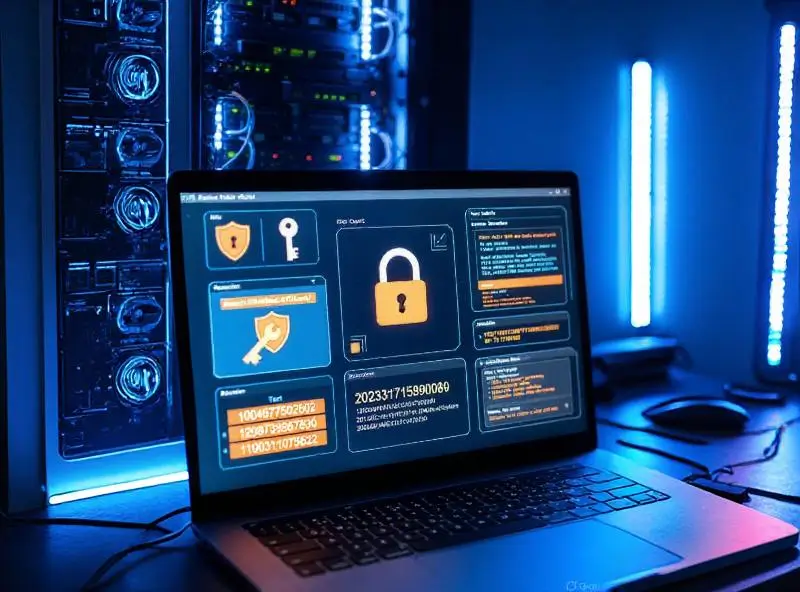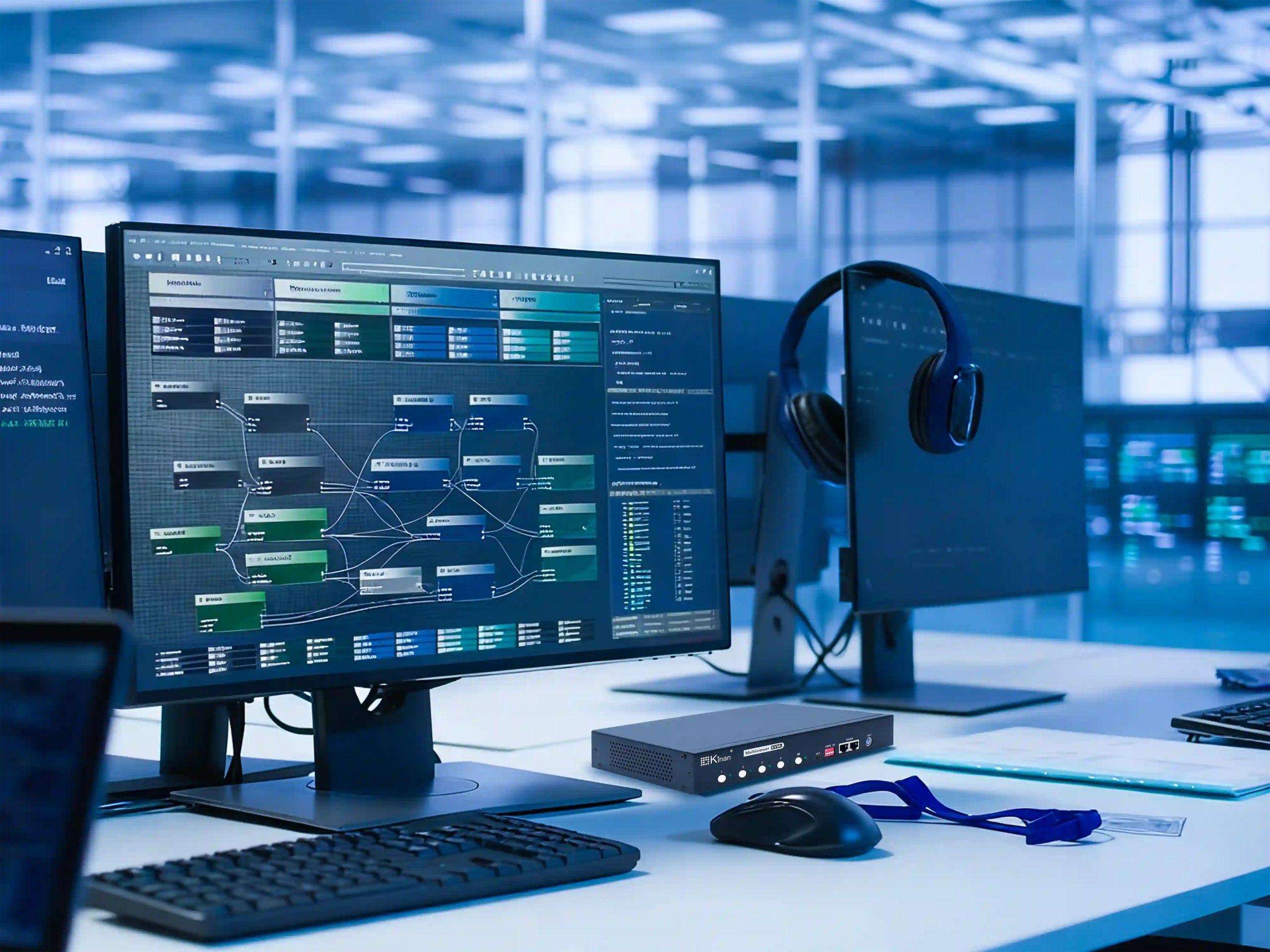As the frequency and complexity of network attacks continue to rise, network security has become a primary concern for businesses worldwide. In the modern IT environment, KVM is not only a convenient tool but also a mission-critical tool. When KVM transmission carries source code, confidential data and commands for critical servers, the security of its content transmission is directly equivalent to the security of the enterprise’s core assets. A single interception or tampering could have catastrophic consequences.
Suppose you are an IT administrator logging into a core server in the data centre from a remote office via IP KVM to perform database maintenance. Every keystroke you transmit and every image displayed on the screen are highly sensitive information. What would happen if these transmissions were intercepted or observed by a malicious third party? It could lead to password leaks, data theft, and even systems being taken over. This secure transmission is no longer merely a technical specification, but rather a crucial component within an enterprise’s cyber security. This article will conduct an analysis of the security threats encountered when using KVM, elucidate the key technologies for secure transmission, and provide recommendations on how to establish a secure KVM environment.
Security Vulnerability of Unencrypted KVM
1. Unprotected Transmission Channels: Eavesdropping and Data Interception
Traditional unencrypted KVM signals, especially KVM over IP, are akin to sending postcards over the internet, where every routing node along the path may be intercepted.
Specific Risks:
Stealing screen content: Attackers can record your entire screen activity and capture all visual information.
Key logging: Captures keyboard signals to directly steal usernames, passwords, encryption keys, and credentials.
Associated scenarios: remote O&M, data center management.
2. Identity Impersonation: Attacker’s Spoofing and Session Hijacking
The attacker uses technical means to disguise itself as a legitimate KVM switch or target server.
Specific Risks:
Operation tampering: If a command entered for the server is tampered with and sent, it can compromise the system.
Information tampering: The screen information returned by the server is modified by the attacker, allowing you to get false information and make wrong judgments.
Associate scenarios: Any KVM connection that requires a reliable, safe and authentic network.
3. Perimeter Defence Failure: Lateral Attacks via KVM
As a connectivity center, if the firmware or software of a KVM contains vulnerabilities, or if USB ports are poorly managed, it may itself become a “springboard” for attacking other connected devices.
Specific Risks:
Malicious device emulation: Attackers control the KVM via vulnerabilities, emulating keyboard input to send malicious commands to all connected servers.
USB device attacks: USB devices connected via KVM (such as USB flash drives) may propagate viruses to all linked computers.
Relevant scenarios: Multi-device peripheral sharing, centralised data centre management.
How to Build a Secure Transmitting Environment via KVM?
1. End-to-End Encryption: Putting a “Lock” on Transmitted Content
Common encryption algorithms include AES (Advanced Encryption Standard), DES (Data Encryption Standard), and 3DES (Triple Data Encryption Standard). Although DES and 3DES are now considered obsolete and insecure, AES remains the gold standard. AES is currently the safest and most mainstream standard widely adopted by countries around the world. It has the characteristics of high speed, high efficiency, and is especially suitable for hardware optimization.
AES is one of the most robust and widely adopted symmetric encryption algorithms available, and it is the cornerstone of modern security protocols, responsible for efficiently encrypting the data itself. The signal is encrypted at the sender and decrypted at the receiver, and even if the data is intercepted, it is nothing but garbled data.
2. Identity Authentication & Authorization: Implementing “Digital Access Control”
Enforce multi-factor authentication (MFA): using mobile verification codes or hardware security keys in addition to passwords to prevent credential theft.
Adopt role-based access control (RBAC): to assign administrators tailored permissions, such as view-only, restricted operation on specific servers, or full control.
Integrate with existing directory services (e.g., Active Directory, LDAP) to centralize and streamline identity management.
3. Comprehensive Audit Logging: The “Black Box” for KVM Operations
Maintain detailed logs of all KVM sessions, capturing user identities, login timestamps, target devices, and every action performed. These records are essential for tracing security incidents, supporting compliance audits, and clarifying accountability.
4. Defense-in-Depth: Isolate KVM Infrastructure from Production Networks
Deploy KVM systems within a dedicated VLAN or private management network, strictly segregated from business services.
Implement strict source IP whitelisting to limit KVM access exclusively to authorized administrative subnets.
Opt for hardware-based KVM solutions in high-security environments: direct-connected, non-IP KVM switches provide true physical isolation, eliminating network-based attack vectors.
Conclusion
Data is a core asset,the secure transmission of KVM content is no small matter, and it is a strategic stronghold for protecting an enterprise’s critical digital resources. When purchasing KVM equipment, security features should be as important as performance and price. Regularly audit the security configuration of existing KVM devices, update firmware on time, and strictly follow safe operation procedures. With the development of computer technology, the demand for remote device management will increase. Choosing a KVM solution with a security design lays a solid foundation for an enterprise’s stable future development.


